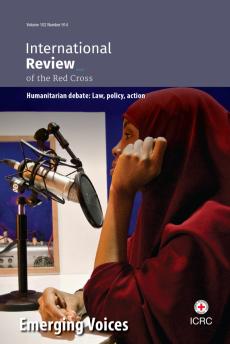IRRC No. 914 Emerging Voices
21 articles
The Review helps both shape and create high-level debates on humanitarian law, policy and action. For far too long, these debates have been dominated by the traditional and established elite. In an attempt to increase the diversity of perspectives represented, the Review launched a global call for papers from “emerging voices,” asking for innovative and creative arguments that might shape debates for years to come. An avalanche of remarkable submissions led to this volume of twenty exceptional articles. As a result of the open-ended nature of this call for papers in terms of topics that could be written on, there is no unifying substantive theme binding them together. Each paper stands on its own merit, with its noted potential to resonate and to shape debate in the years ahead. What these papers do have in common, though, is that their selection for publication stands as a recognition of their quality – and that we can collectively look forward to hearing and reading more from these authors in the years to come.

